Table of Contents
Diabetes has reached epidemic levels all over the world, leading people to be more cautious about the amount of sugar they consume.
Among the seven food groups, fruits are the most controversial when it comes to diabetes. They are usually perceived as healthy, but they may carry health risks. That’s why it’s essential to understand the potential effects of fruit consumption.
Discover how much sugar is in bananas and other high-sugar fruits to make informed decisions for your health. Let’s dive into it together!
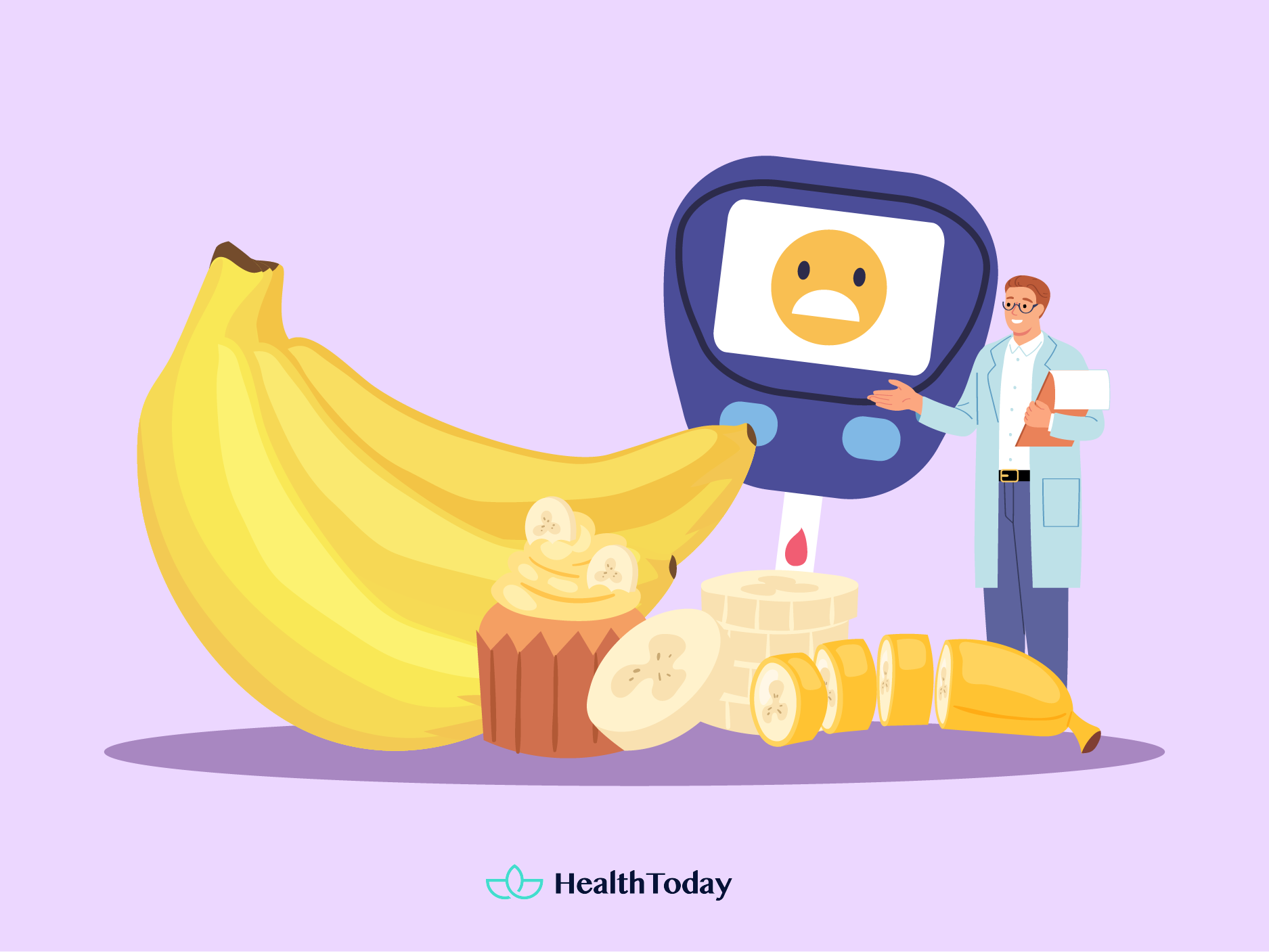
Bananas and diabetes: What you should know
Bananas are not only the most popular fruit, but they are also healthy. They are packed with essential nutrients like potassium, vitamin B6, and dietary fiber, which can lower blood pressure, improve digestion, and boost energy.
Nonetheless, many are concerned about eating bananas because of their carbohydrate content.
In the body, carbohydrates are broken down into glucose, a form of sugar used for energy. As these sugars enter the bloodstream, blood glucose levels naturally rise, staying within a healthy range below 7.8mmol/L (140 mg/dl) after meals for non-diabetic individuals (1).
In response, the pancreas releases insulin to transport glucose into cells for energy, restoring sugar levels to their pre-meal state.
Excessive sugar consumption, however, can lead to spikes in blood sugar levels, known as postprandial hyperglycemia. These spikes are associated with insulin resistance, increasing the risk of diabetes and heart disease (2, 3).
Before crossing bananas off your list, let’s explore their sugar content and glycemic index.
So, how much sugar is in a banana?
In fact, the amount of sugar in bananas depends on how ripe they are (4).
Unripe bananas, while green and firm, contain more starch than sugar. As bananas ripen, starch is converted into sugar, which results in a sweeter taste and a softer and creamier texture.
For a 100-gram serving, unripe bananas have about 3 grams of sugar, while ripe to overripe bananas contain a little over 10 grams (5). The sugar content at different stages of ripeness is summarized in the table below.
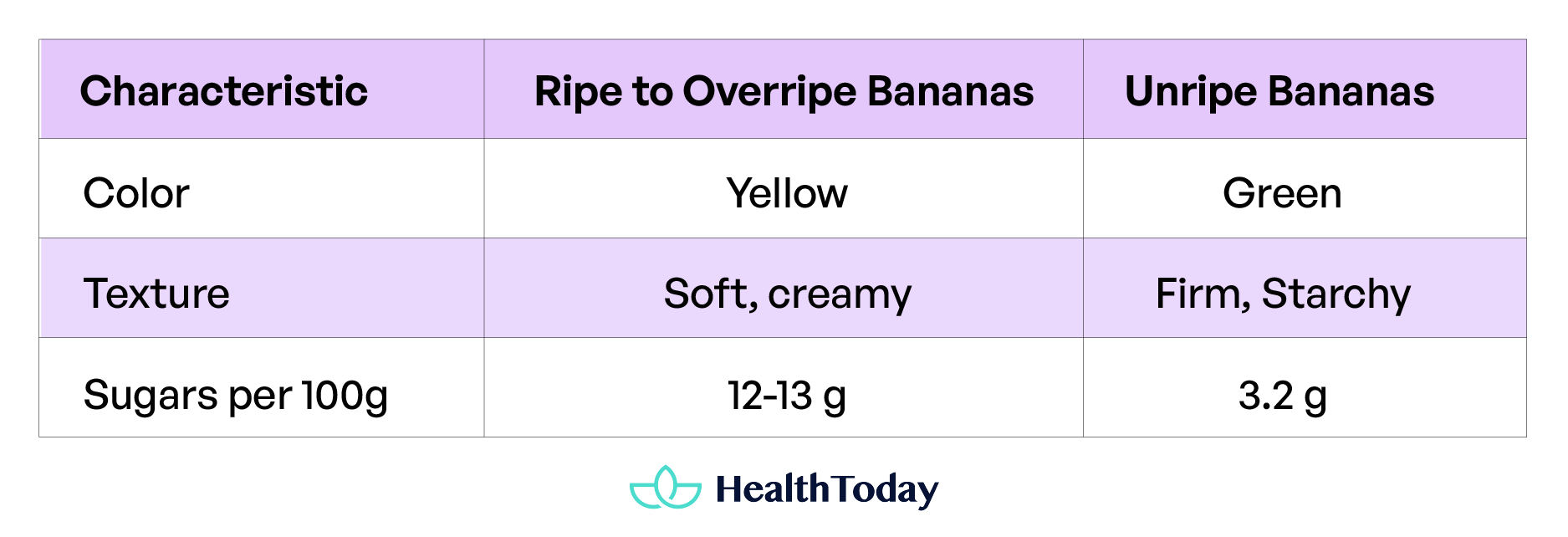
So, fear not the banana! You can enjoy its nutrient richness and moderate sugar content as part of a balanced diet.
The glycemic index of banana
The glycemic index (GI) plays a significant role in understanding how different foods affect blood sugar levels. By definition, it is a scale that ranks carbohydrate-containing foods based on how quickly they raise blood sugar levels (6).
Foods with high GI ranked above 70 are rapidly digested, causing a quick and significant increase in blood sugar levels. On the other hand, foods with low GI ranked below 55 are digested slowly, leading to a gradual and moderate rise in blood sugar levels.
For individuals with diabetes, being aware of the glycemic index of foods is important in managing blood sugar levels. Choosing foods with a lower GI can help prevent rapid spikes in blood glucose and promote better glycemic control.
Bananas have a low GI value of 51, which places them in the middle range compared to glucose, which has a GI value of 100. Bananas’ medium GI value indicates that they only moderately impact blood sugar levels.
Are bananas good for people with diabetes?
The verdict is that bananas can be part of a healthy diet for individuals with diabetes and those at risk of diabetes. Their low to medium glycemic index and moderate sugar content, combined with fiber and other essential nutrients, make them a nutritious choice.
However, to maintain stable blood sugar levels, it is crucial to consume them in moderation and within the context of a well-balanced diet.
Which fruits are high in sugar?
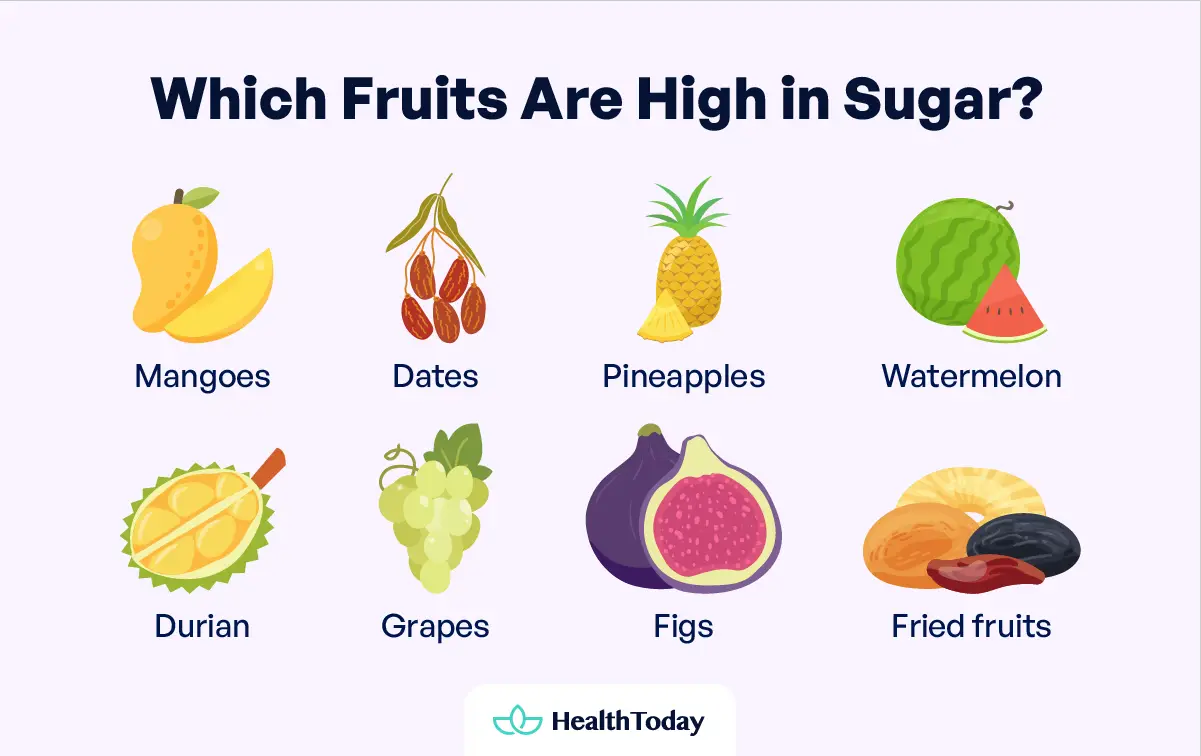
Generally, fruits are seen as a natural provider of sugar, specifically fructose, sucrose, and glucose. Nonetheless, the amount of sugar in fruits can differ based on the specific fruit and its level of ripeness. So, one might wonder:
Are mangoes diabetes-friendly?
Mangoes are a delicious tropical fruit enjoyed by many people around the world. However, they do contain natural sugars and can impact blood sugar levels, which is something to consider for individuals with diabetes.
A 100-gram mango typically contains around 14 grams of sugar with a moderately high glycemic index value of 56. This indicates that it can cause a moderate increase in blood sugar levels when you consume it (7, 8).
However, if you’d like to enjoy an occasional slice of mango, a good rule of thumb is to limit yourself to no more than half a mango per day. Besides that, you should monitor your blood sugar levels after eating mangoes to ensure they do not rise too high.
Can dates spike blood sugar levels?
While dates are nutritious fruits packed with fiber, vitamins, and minerals, they also contain a significant amount of carbohydrates in the form of sugar.
Whether fresh or dried, a 100-gram serving of dates contains about 40 to 70 grams of sugar. No matter the variety, dates are relatively high in sugar compared to other fruits like bananas (9).
Moreover, its glycemic index is 70, which ranks high on the GI scale (10). This can be a concern for people trying to manage their glucose levels.
Avoiding dates is ideal, but if you’re craving them, pair them with a source of protein or healthy fats like nuts or seeds to slow down sugar absorption and minimize the impact on blood sugar levels.
Do pineapples fit in a diabetes meal plan?
Unfortunately, these sweet tropical fruits are not diabetes-friendly.
Pineapples are rich in beneficial nutrients like vitamin C and manganese. However, a full cup of this fruit can have more than 16 grams of sugar and a moderate GI value of 51 to 66 (11, 12).
Needless to say, more caution should be taken when eating canned pineapples. The syrup’s added sugars would raise its GI value to between 66 and 94, which is well above the threshold for being considered a high-GI food.
If you suffer from diabetes but still want to incorporate pineapple into your diet, a good rule of thumb is to have no more than 100 grams of pineapples a day. You should also pair this fruit with low-GI foods, like protein and healthy fats.
Since the effects of eating pineapples, like those of other foods, vary for each person, it is still crucial to take caution by checking your sugar levels and consulting with a physician.
Does watermelon have a lot of sugar?
On average, watermelon contains about 6 to 8 grams of sugar per 100 grams. This sugar content is relatively moderate compared to some other fruits like mangoes. However, watermelon has a GI value of above 70, which is considered high (13).
Nevertheless, watermelon is also a refreshing and hydrating fruit that is low in calories and high in nutrients. It is a good source of vitamins A, C, and B6 and lycopene, an antioxidant linked to reducing the risks of heart disease and cancer (14).

Is durian good for diabetes?
Simultaneously loved and hated for its strong aroma and distinct taste, durian is among the foods to avoid when dealing with high blood sugar levels and diabetes.
Durian is not considered good for diabetes due to its high sugar and carbohydrate content. While the fruit itself doesn’t cause diabetes, it can lead to blood sugar spikes in individuals who already have diabetes (14).
However, individuals without diabetes can still enjoy durian moderately, due to its other health benefits, such as being a good source of dietary fiber, vitamin C, and potassium.
Do grapes contain a lot of sugar?
Both red and green grapes contain approximately 15 grams of sugar in a one-cup serving, which is slightly higher than the sugar content of a medium-sized banana. The Cotton Candy Grapes have the highest sugar content among all grape varieties, providing around 28 grams of sugar in a one-cup serving (15).
For grape enthusiasts, it’s easy to mindlessly munch on grapes without realizing the recommended one-cup serving size.
This can result in unintentionally consuming a whole bag of grapes, as most bags typically hold about eight cups. Consequently, you may end up consuming a substantial 120 grams of sugar in one sitting.
Even with healthy foods like grapes, being mindful of portion sizes is essential to manage sugar intake and maintain a balanced diet.
Do figs spike glucose?
Yes, dried figs have a high glycemic index of 61, which means they can cause a relatively quick increase in blood glucose levels (16).
Fresh figs, however, have a GI of around 35, which makes them a low-GI food that would not spike glucose (17).
You should be cautious with fig consumption, especially if you have diabetes, as excessive intake can lead to blood sugar spikes. To manage blood sugar effectively, it is advisable to follow a low-glycemic diet and control portion sizes.
Are dried fruits an exemption?
Dried fruits undergo a drying process, during which most of their water content is removed. While this preservation method enhances their shelf life, it also increases natural sugar concentration compared to fresh fruit.
The natural sugars like fructose and glucose are an important energy source for the body. However, consuming foods with high sugar content can make it challenging for diabetics to manage their blood glucose levels (18).
Drying removes water from the fruits, causing the sugars to become more concentrated. As a result, even small amounts of dried fruits can contain significant sugar levels compared to larger portions of their fresh counterparts.
This concentrated sugar content in dried fruits can cause a rapid rise in blood glucose levels, which is concerning for people with diabetes.
Top 5 fruits people with diabetes can eat
When it comes to managing diabetes, choosing fruits with lower glycemic index and considering their overall nutritional profile is crucial. Here are five diabetes-friendly fruits to include in your diet.
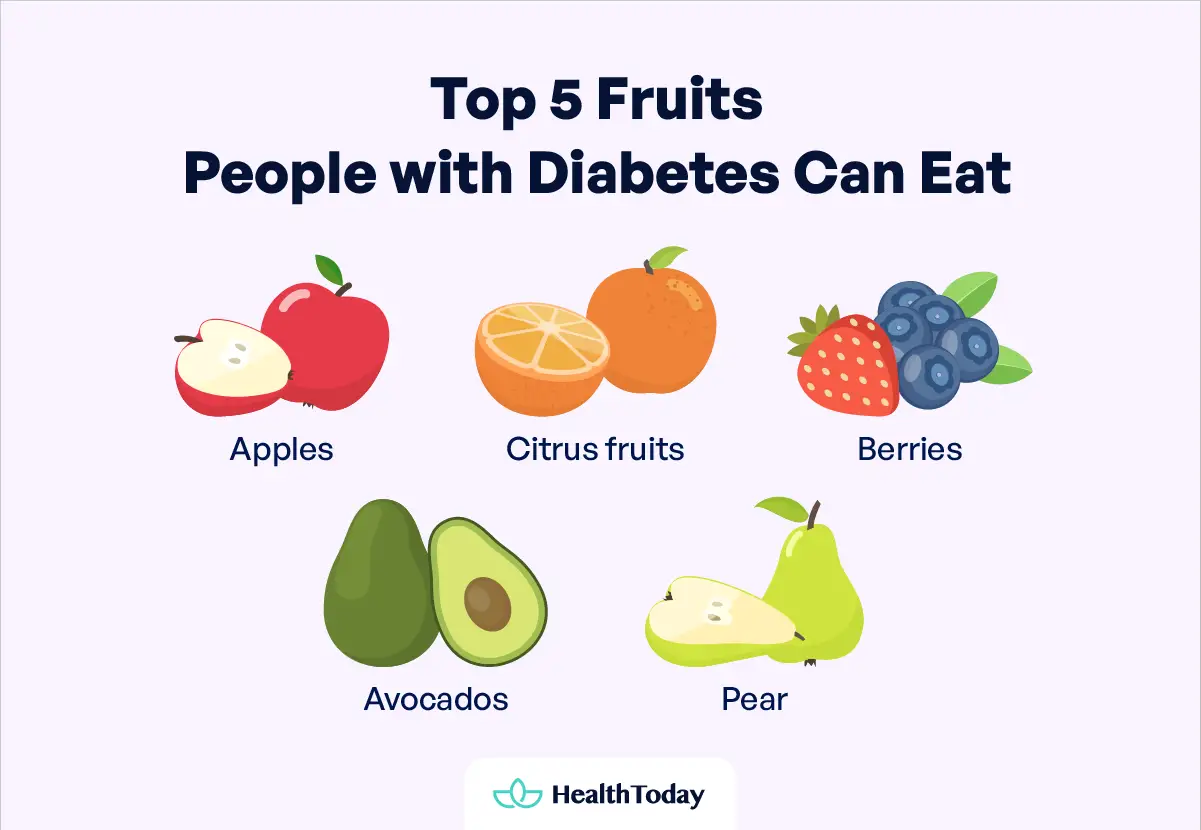

1. Apples: Do apples have sugar?
Like other fruits, apples contain natural sugars, primarily fructose. A 100-gram apple contains about 10 grams of sugar (18). However, they are still considered diabetes-friendly fruit because they have a relatively low glycemic index (GI) of 36 (19).
Additionally, apples have an impressive nutritional profile. They are rich in dietary fiber, which helps slow down the absorption of sugars into the bloodstream. They are also rich in essential vitamins such as vitamin C, which supports immune function (20).
Apples provide important strong dietary antioxidants, like quercetin, catechin, phloridzin, and chlorogenic acid, which have potential health benefits, such as reduced risk of cancer, heart disease, asthma, and diabetes (21).
Research has shown that eating apples before meals could improve postprandial hyperglycemia or glucose spikes in individuals with or without glucose tolerance (22).
Indeed, an apple a day keeps doctors away.
2. Citrus fruits
While known for their vibrant, tangy, and refreshing taste, citrus fruits also possess a hint of sweetness. Depending on the variety and ripeness, the sweetness of these fruits can range from subtle to pronounced.
However, most citrus fruits are also an excellent food choice for people with diabetes (23). Despite their sweet taste, citrus fruits generally have a low glycemic index value, which means they have minimal impact on blood sugar levels (24).
Citrus fruits are a particularly rich source of vitamin C and folate, both of which have important roles in strengthening the body’s immune system (25). They also contain substances like pectin, carotenoids, and polyphenols that promote health (26).
In particular, naringenin, a citrus flavanone, was shown to have anti-diabetic properties and can be used as medicine to fight insulin resistance (27). Grapefruit is especially rich in naringenin, while its content in orange and lemons is much lower.
3. Berries
Berries, nature’s small and delectable treats, have earned their place as an integral part of a balanced and healthy diet. That said, a diabetic’s diet is no exception (28).
These fruits are especially good for blood sugar management as they only contain about 6 grams of sugar per 100 g serving. Moreover, common berries, like cranberries, blueberries, and strawberries, help with postprandial hyperglycemia.
Berries stand as a testament to nature’s bounty, offering a multitude of health benefits and sensory delights. Cranberries and blueberries are particularly rich in anthocyanins, which have anti-obesity, antimicrobial, and anti-diabetic properties (29, 30).
Enjoy berries as a yogurt topping, or add them to your breakfast pancakes or oatmeal.
4. Avocados
With their creamy texture and rich flavor, avocados have become incredibly popular in recent years. Apart from being delicious, avocados have also emerged as a beneficial food choice for individuals managing diabetes.
Avocados are well-known for their low carbohydrate, high fiber, and high healthy fats content (31). One fruit contains about 13 g of total carbohydrates and 10 g of dietary fiber. So, the total amount of ingestible carbohydrates is only 3 g.
They are also one of the very few fruits with very low sugar content, consisting of less than 1 g of total sugars per fruit. Not only are they easy on the body’s glucose levels, but they are also rich in potassium, magnesium, and folate (32).
Pair avocados with salads or mash them for an easy avocado toast for your next snack.
5. Pear
Pears are a fantastic fiber source, containing almost 5.5 grams of fiber in one medium-sized pear, as stated by the United States Department of Agriculture (33).
This makes them a smart choice to include in your diabetes meal plan. Interestingly, unlike many other fruits, pears tend to enhance both their texture and flavor as they ripen after being picked.
For optimal results, store your pears at room temperature until they reach the desired ripeness for consumption. Once ripe, you can transfer them to the refrigerator for longer preservation, as recommended by USA Pears.
If you want a delicious and healthy option, try slicing up a pear and adding it to your next spinach salad. The natural sweetness and juiciness of the pear will complement the flavors of the salad, making it a delightful and nutritious combination.



Can you eat bananas with metformin?
Yes, you can safely include bananas in your diet while taking metformin. They can be beneficial for diabetics who are on this medication.
In fact, incorporating bananas into your diet alongside metformin allows you to obtain essential fiber and nutrients without causing significant increases in blood sugar levels.
Are green bananas good for diabetics?
Raw green bananas are a preferable choice over ripe bananas due to their lower sugar and starch content.
Incorporating green or raw bananas into your diet is particularly beneficial for diabetes patients, as they have a lower glycemic index (GI) compared to ripe bananas.
Is a banana a day too much sugar?
Eating one banana a day doesn’t amount to excessive sugar consumption. Bananas contain two types of sugar: natural and refined. As they are rich in fructose, a naturally occurring sugar, they serve as a valuable source of carbohydrates.
What has less sugar, apple or banana?
Apples contain 10.4 grams of sugar, while bananas contain 12.2 grams. Therefore, apples have a lower amount of sugar compared to bananas.
What food has no sugar at all?
Various healthy food options that have no sugar include seeds, nuts, eggs, dairy, fish, meat, and vegetables. Unprocessed seafood, fish, and meat are excellent options because they do not contain any sugar or carbohydrates.
Summary
Having a diverse range of fruit choices is crucial for people with diabetes, but careful attention to fruit selection and portion sizes is equally important.
While fruits offer essential nutrients, some can cause rapid spikes in blood sugar levels due to their sugar content and glycemic index. As for bananas, you can enjoy them in moderation due to their moderate glycemic index and nutrient richness.
However, consume fruits like mangoes, dates, pineapples, and watermelon with caution.
Opting for diabetes-friendly fruits like apples, citrus fruits, berries, avocados, and pears can provide health benefits while helping manage blood sugar levels effectively. Consulting a healthcare professional for personalized advice is recommended.







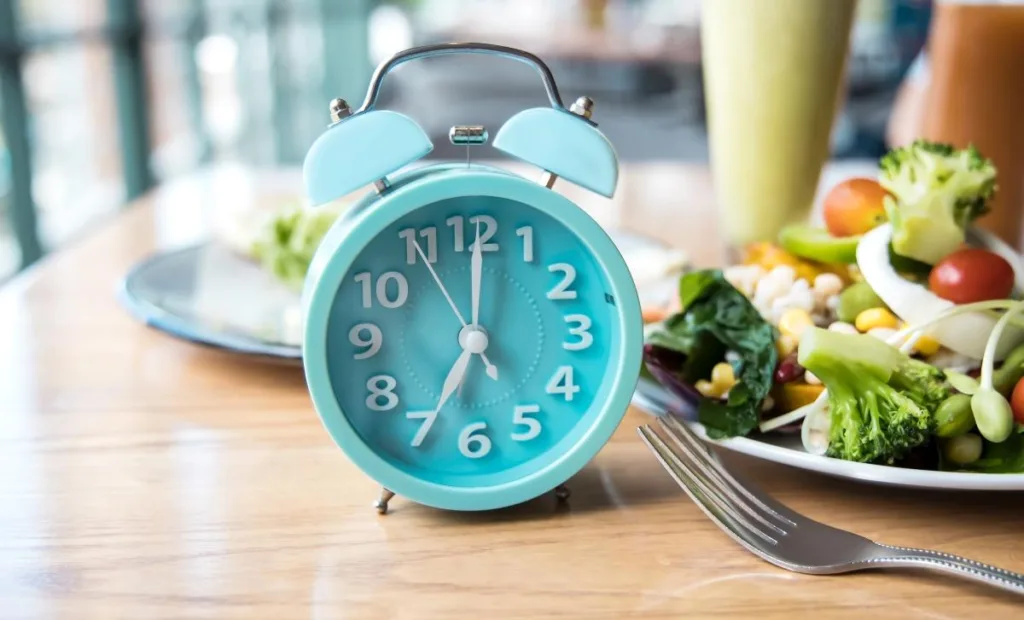


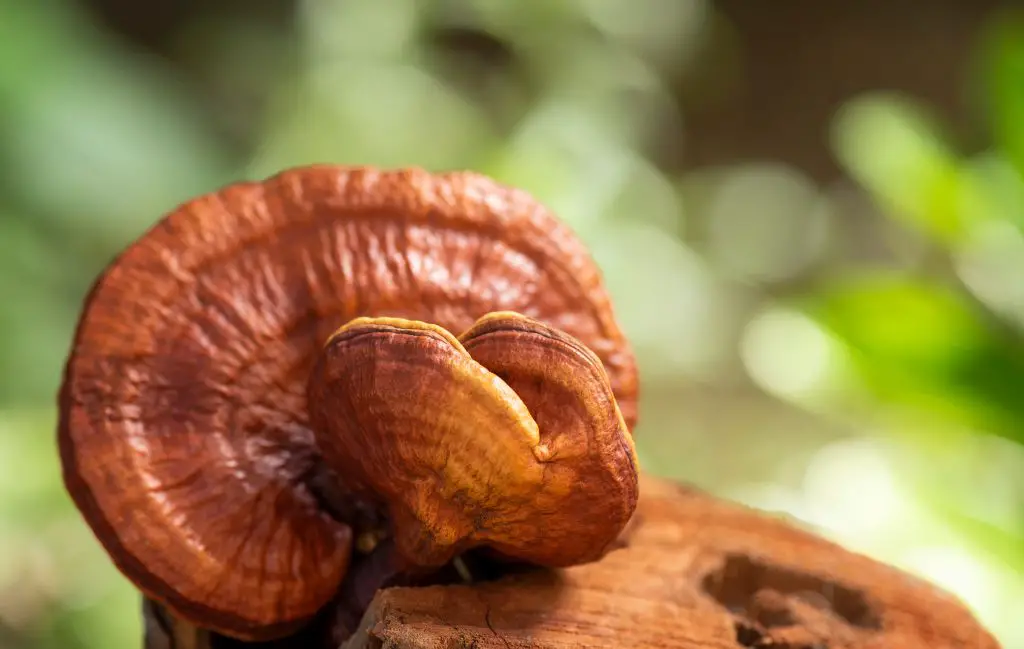



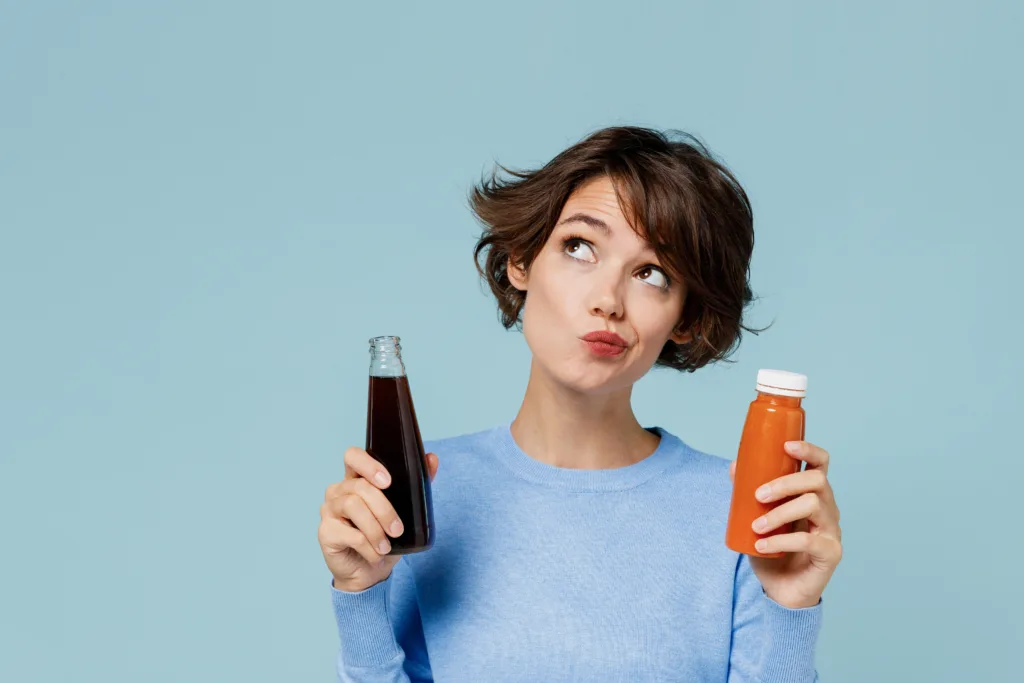
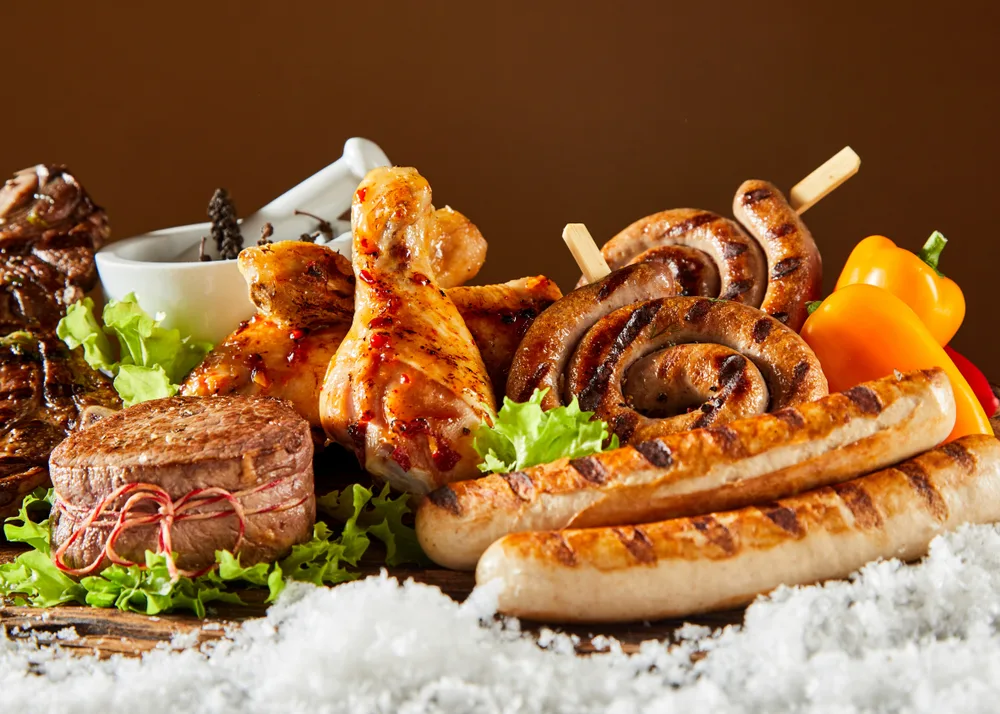

Comments
0